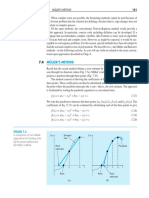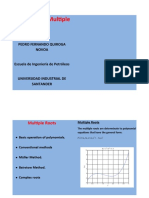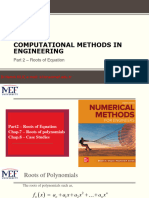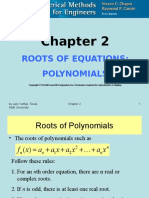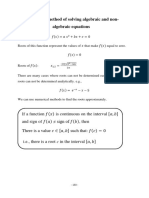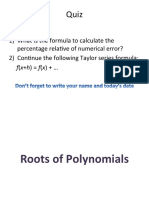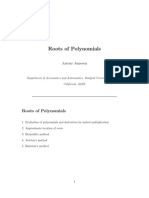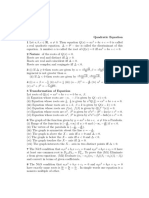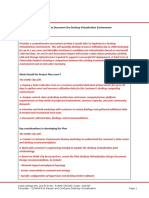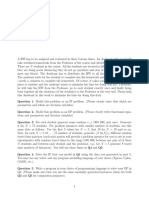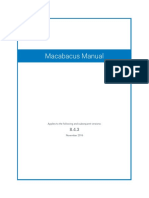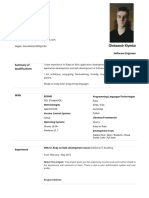0% found this document useful (0 votes)
40 views16 pagesChapter 7
Chapter 7 discusses methods for finding the roots of polynomial equations, focusing on real coefficients and the nature of roots, including the existence of complex conjugate pairs. It introduces numerical methods such as Miiller's and Bairstow's methods for root estimation, emphasizing their iterative nature and the handling of complex roots. The chapter provides detailed mathematical formulations and examples to illustrate the application of these methods in engineering and science.
Uploaded by
fatmanurkendirci7Copyright
© © All Rights Reserved
We take content rights seriously. If you suspect this is your content, claim it here.
Available Formats
Download as PDF, TXT or read online on Scribd
0% found this document useful (0 votes)
40 views16 pagesChapter 7
Chapter 7 discusses methods for finding the roots of polynomial equations, focusing on real coefficients and the nature of roots, including the existence of complex conjugate pairs. It introduces numerical methods such as Miiller's and Bairstow's methods for root estimation, emphasizing their iterative nature and the handling of complex roots. The chapter provides detailed mathematical formulations and examples to illustrate the application of these methods in engineering and science.
Uploaded by
fatmanurkendirci7Copyright
© © All Rights Reserved
We take content rights seriously. If you suspect this is your content, claim it here.
Available Formats
Download as PDF, TXT or read online on Scribd
/ 16
